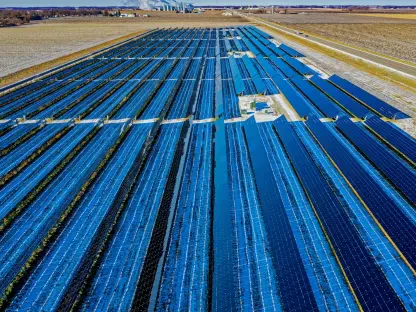In an increasingly competitive energy landscape, the PJM Interconnection’s market faces a pivotal moment as NRG Energy proposes a $12 billion acquisition that could fundamentally alter market dynamics. This move involves acquiring 18 natural gas-fired power plants alongside a virtual power plant platform with significant capacity. The possible shift in market power dynamics raises critical questions about regulation and the balance needed to prevent market manipulation.
The Current State of the Energy Market
The current energy market is a complex ecosystem characterized by rapid technological advancements, evolving consumer preferences, and significant regulatory oversight. Across regions like PJM, traditional and renewable energy sources compete to meet consumer demand efficiently. Key segments include traditional power plants, innovative renewable projects, and emerging virtual power plant technologies, all of which must adhere to robust regulatory frameworks. Influential market players, including NRG, navigate these elements to provide cohesive energy solutions while aiming for growth and competitiveness.
Market dynamics are continuously reshaped by the influx of technology and the pressing need for sustainable solutions. Technological advancements, such as smart grids and improved storage capacities, exert influence on market practices. As companies invest heavily in innovative solutions, the potential for substantial sector shifts becomes more pronounced. This environment creates both challenges and opportunities for players aiming to maintain their position while adapting to rapidly changing conditions.
Key Industry Trends and Developments
Emerging Trends and Technological Influences
Emerging trends in the energy sector underscore the shift toward more efficient and scalable technologies. The increasing adoption of renewable energy, coupled with advancements in energy storage and grid management, sets the stage for transformative changes. Evolving consumer behaviors, favoring sustainability and reduced carbon footprints, drive companies to innovate continuously. These trends open new avenues for players ready to leverage technological breakthroughs and consumer interest.
Marketplace advancements are yielding a wave of innovation, promising enhanced capabilities and new operational strategies. Digitalization, artificial intelligence, and blockchain are emerging as critical tools in managing energy distribution more effectively. As these technologies mature, they are poised to redefine market strategies and consumer engagement, creating opportunities for growth and improved service delivery.
Market Projections and Performance Indicators
The energy sector’s trajectory suggests sustained growth fueled by technological integration and increased consumer demand for sustainable solutions. Current market data forecasts indicate expansions in renewables and grid management systems, signaling robust future performance. Indicators like the development of smart grids and storage solutions reveal a positive trend toward enhanced energy efficiency and integration.
Forward-looking projections suggest significant growth as energy providers capitalize on innovation and consumer shifts. By adopting sustainable and efficient practices, market participants can expect continued investment and performance improvements. These projections underline an optimistic outlook, with growth predicated on aligning with technological trends and consumer expectations.
Challenges and Complexities in the Energy Sector
Despite promising trends, the energy market faces various challenges that can impede growth and efficiency. Technological hurdles, particularly those related to integrating renewable energy with existing grids, continue to pose significant obstacles. Additionally, regulatory complexities can limit market expansion and innovation unless proactively addressed. Companies must navigate these challenges to remain competitive and capitalize on emerging opportunities.
Market-driven challenges also pose significant implications for industry players. The need to manage volatile energy prices and fluctuating demand presents ongoing complexity. Strategies to overcome these hurdles emphasize investment in technology and innovation, positioning companies to navigate market dynamics successfully while fostering resilience.
Navigating the Regulatory Landscape
The regulatory landscape in the energy industry presents essential implications for players navigating complex legal frameworks. Key regulations govern areas such as emissions, safety standards, and market competition, impacting operating environments and strategic decisions. Recent regulatory changes underscore a trend toward stricter compliance requirements, emphasizing transparency and fairness in market operations.
Compliance and security measures play a crucial role in aligning industry practices with regulatory expectations. Companies are tasked with implementing robust systems to ensure adherence while anticipating future regulatory shifts. Understanding regulatory impacts and aligning operations accordingly remains vital for industry players to avoid disruptions.
Future Directions and Market Opportunities
As the energy sector evolves, strategic shifts and innovative practices define its trajectory. The convergence of technology and consumer demand guides future opportunities, with companies focusing on renewable energy, digitalization, and enhanced efficiency. Emerging market disruptors, including virtual power plants and demand response technologies, present lucrative growth avenues for proactive industry participants.
Innovation and regulation are critical drivers of future industry advancements. Technological breakthroughs offer competitive advantages, while shifting regulations compel adaptations toward more sustainable practices. Global economic conditions and consumer priorities will shape future growth, emphasizing the need for agility and strategic foresight to capture emerging opportunities.
Conclusion and Strategic Recommendations
The findings presented highlight the potential for significant shifts in PJM’s energy market dynamics driven by NRG’s proposed acquisition. The evolving landscape demands robust regulatory oversight to safeguard market fairness and consumer interests. Strategic recommendations emphasize embracing technology and innovation while aligning with regulatory expectations, ensuring resilient growth and sustainable practices. Players should prioritize efficiency and sustainability, exploring new market opportunities presented by technological advancements and shifting consumer preferences to capitalize on future growth opportunities.









